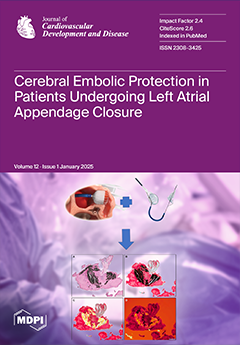Background: Severe aortic stenosis (AS) stratified by sex has been increasingly studied in the European population. Sex-specific outcomes in Asian patients with AS remain poorly defined. Hence, we aimed to study the clinical characteristics and impact of sex in moderate-to-severe AS, undergoing both invasive and conservative interventions in an Asian cohort over 10 years. Methods: Consecutive data with echocardiographic diagnoses of AS were stratified according to gender in a tertiary academic center between 2011 and 2021. Demographics, comorbidities, and clinical outcomes were compared. Results: Seven hundred and three (703) patients were included (56%,
n = 397 were female). Calcific AS was the dominant etiology in both genders. Females had higher incidences of anemia (
p < 0.001) and chronic kidney disease (
p = 0.026); although, females had lower incidences of cardiovascular complications of coronary artery disease (CAD) (
p = 0.002) and prior acute myocardial infarction (AMI) (
p = 0.015). Echocardiographically, females had a smaller left ventricular outflow tract diameter (LVOTd) (
p < 0.001), LV mass (
p < 0.001), and left ventricle end diastolic volume (LVEDV) (
p < 0.001). Conversely, the left atrial (LA) area (
p < 0.001) and volume index (LAVI) (
p < 0.001) were larger in females. Females had higher average E/e’ (
p = 0.010) ratios compared to males. The mean follow-up duration between genders was 4.1 ± 3.3 years. Upon univariate analysis, a greater proportion of female AS patients encountered cardiovascular (CV) hospitalization during follow-up (female: 27.5%,
n = 109 vs. male: 18.3%,
n = 56;
p = 0.005) compared to male patients, but there were no significant differences for the outcomes of heart failure (
p = 0.612), stroke (
p = 0.664), and all-cause mortality (
p = 0.827). Fewer females underwent aortic valve (AV) intervention compared to males (21.2% vs. 27.8%,
p = 0.042), albeit with a longer duration to AV intervention (3.6 years ± 2.4 vs. 2.6 years ± 2.3,
p = 0.016). In the severe AS cohort, female sex remained an independent predictor for subsequent heart failure (aHR 2.89, 95% CI 1.01–8.29,
p = 0.048) and CV hospitalization (aHR 20.0, 95% CI 1.19–335,
p = 0.037) after adjustments for age, ethnicity, body mass index (BMI), comorbidities, left ventricular ejection fraction (LVEF), and AV intervention. Conclusions: There was no difference in heart failure, stroke, and all-cause mortality outcomes between male and female Asian patients with moderate-to-severe AS. However, there were more cardiovascular hospitalizations, with fewer and longer duration to AV intervention in females compared to males in our cohort.
Full article






